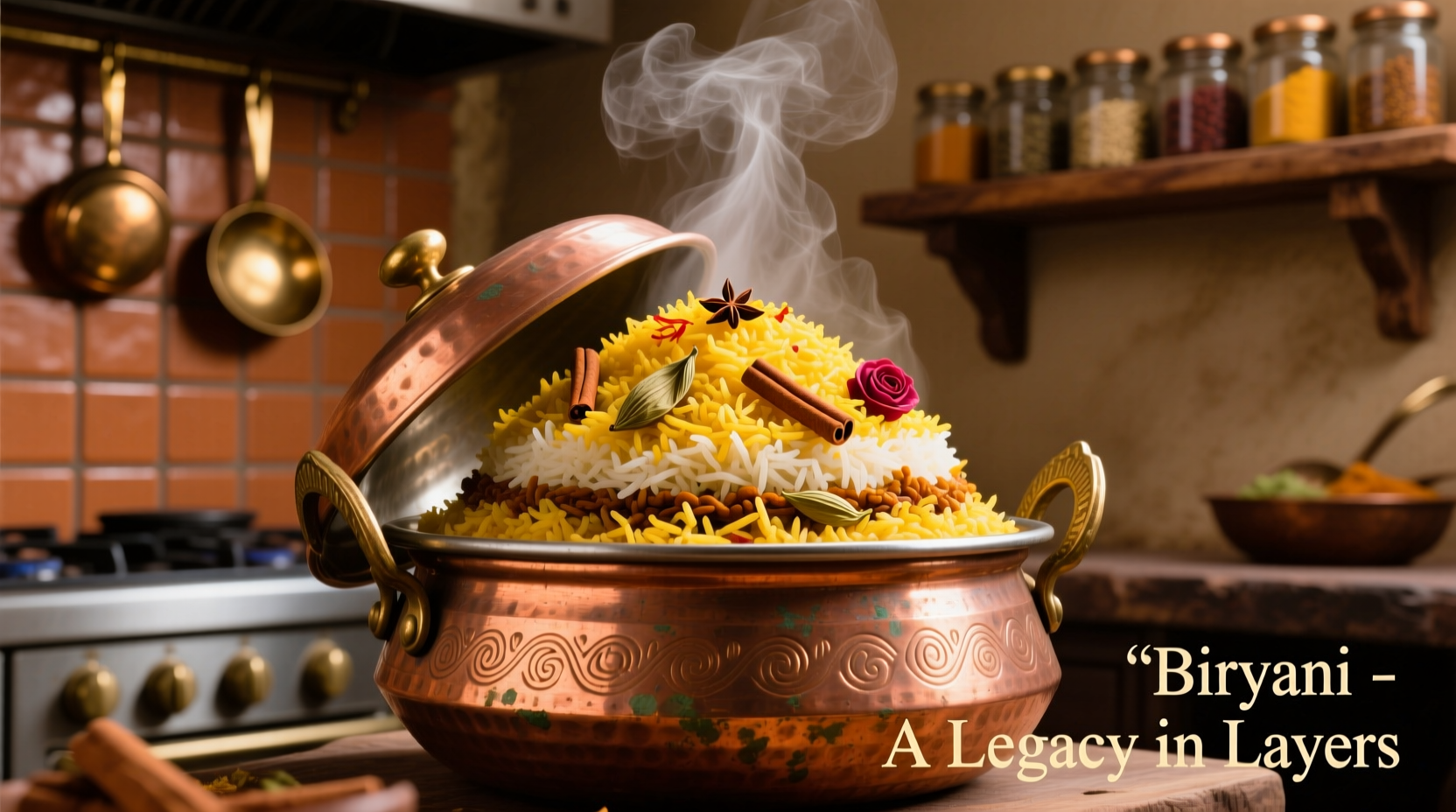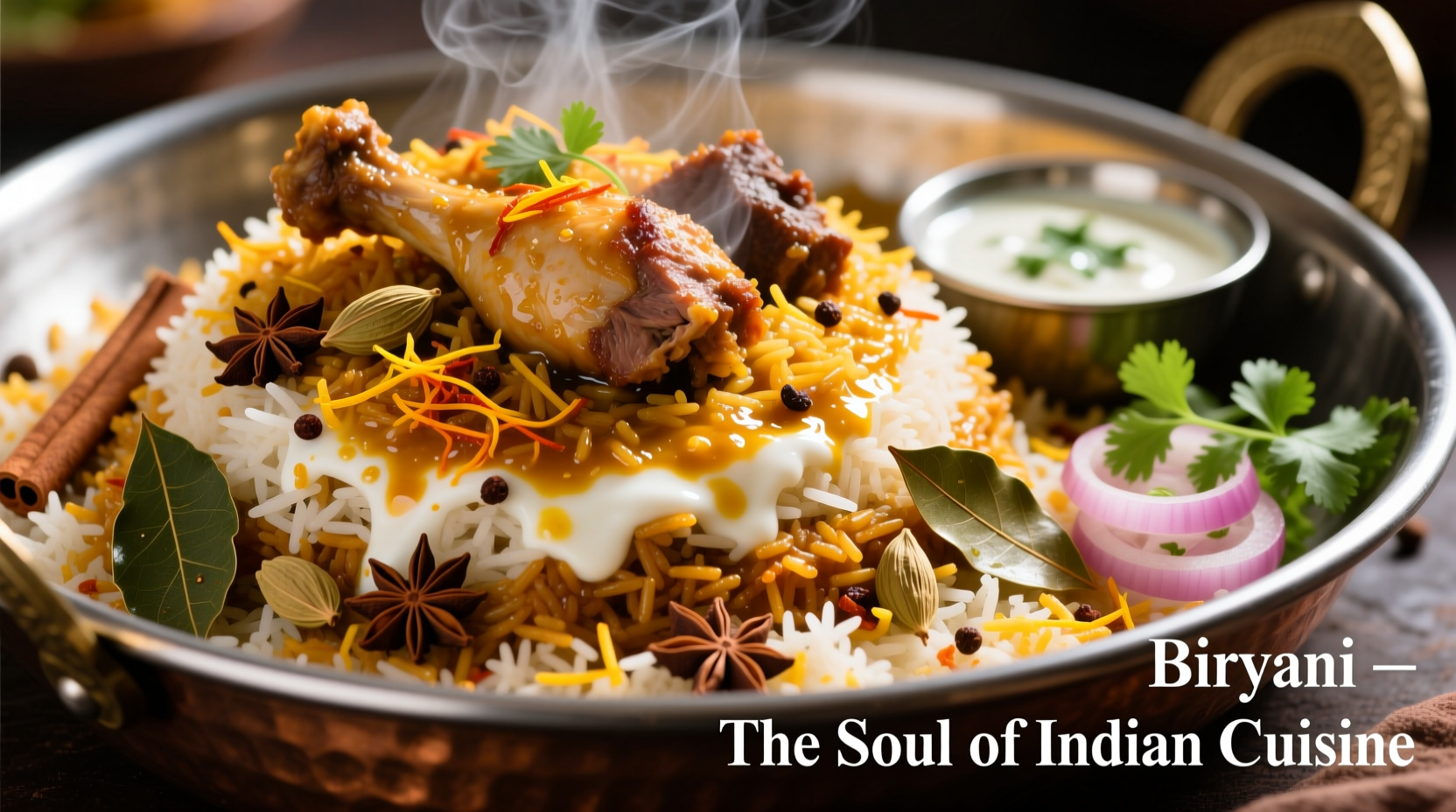Discover the rich tapestry of flavors and traditions behind one of South Asia's most beloved culinary treasures. This comprehensive guide reveals what makes biryani unique, its historical journey across continents, and how to distinguish authentic preparations from common imitations. Whether you're encountering biryani for the first time or seeking to deepen your appreciation, you'll gain practical knowledge to identify quality biryani and understand its cultural significance.
The Essential Components That Define Biryani
What separates biryani from other rice dishes comes down to five critical elements working in harmony. First, premium aged basmati rice provides the long-grained foundation that absorbs flavors without becoming mushy. Second, the signature 'dum pukht' cooking technique—where partially cooked ingredients are layered in a sealed pot and slow-cooked over low heat—creates the dish's distinctive aroma and texture. Third, the precise spice blend featuring saffron, cardamom, cloves, cinnamon, and bay leaves creates biryani's complex flavor profile. Fourth, the marination process for meats (typically chicken, mutton, or goat) using yogurt and spices tenderizes proteins while infusing deep flavor. Finally, the careful layering technique alternates rice with meat and accompaniments like fried onions, nuts, and herbs to create visual appeal and flavor distribution.
Biryani's Historical Evolution Across Centuries
Tracing biryani's journey reveals how culinary traditions transform through cultural exchange. Historical evidence suggests biryani's origins lie in ancient Persia, where similar rice dishes called 'birinj' or 'biryan' were prepared for royalty. When Persian influences reached the Indian subcontinent through Mughal emperors in the 16th century, the dish evolved significantly. The first documented reference to biryani appears in the memoirs of Mughal Emperor Babur around 1526, describing a rice dish prepared for his troops.
As the Mughal Empire expanded, regional variations emerged based on local ingredients and preferences. In Hyderabad, the Nizams developed the famous 'kacchi' method where raw marinated meat cooks with rice. In Lucknow, the Awadhi tradition perfected the 'pakki' style with pre-cooked ingredients. Coastal regions incorporated seafood, while vegetarian versions emerged in communities with dietary restrictions. British colonial influence introduced new ingredients like potatoes, which became integral to Kolkata biryani. Today, biryani has traveled globally, adapting to local tastes in Malaysia, Singapore, South Africa, and the Middle East while maintaining its essential character.
Regional Biryani Variations Compared
| Regional Style | Key Characteristics | Signature Ingredients | Cooking Method |
|---|---|---|---|
| Hyderabadi | Rich, spicy, vibrant color | Saffron, mint, fried onions, lemon | Kacchi (raw meat with rice) |
| Lucknowi (Awadhi) | Milder, subtle spices, elegant presentation | Kewra water, rose water, delicate herbs | Pakki (pre-cooked ingredients) |
| Kolkata | Mildly spiced, slightly sweet | Potatoes, boiled eggs, subtle saffron | Pakki with unique potato addition |
| Sindhi | Bright red color, tangy flavor | Tomatoes, dried plums, vibrant spices | Combination method |
| Malaysian | Coconut milk base, aromatic | Coconut milk, pandan leaves, local spices | Modified dum technique |
Identifying Authentic Biryani: Practical Guidelines
When evaluating biryani quality, focus on these sensory characteristics. Authentic biryani features distinct, separate grains of rice that remain firm yet tender—never mushy or sticky. The aroma should reveal multiple spice layers without any single note dominating. Visually, you should see clear separation between rice and meat layers with visible saffron streaks and fried onions. When served, the 'dum' seal should be intact, releasing an aromatic steam that carries the complex spice blend.
Common misconceptions include confusing biryani with pulao (a simpler one-pot rice dish) or believing all yellow rice dishes qualify as biryani. True biryani requires the specific layering technique and spice profile. Another myth suggests biryani must be extremely spicy—it's actually about balanced flavors where heat plays a supporting role. When ordering biryani, ask about the cooking method ('kacchi' vs 'pakki') and whether they use proper aged basmati rice, as these factors significantly impact quality.

When and How Biryani Fits Into Cultural Traditions
Biryani's role extends far beyond everyday meals—it serves as a cultural touchstone across South Asia. Traditionally prepared for special occasions including weddings, religious festivals, and family gatherings, biryani symbolizes hospitality and celebration. In Hyderabad, the 'dastarkhwan' (community dining cloth) features biryani as the centerpiece during Eid celebrations. Bengali families serve Kolkata biryani during Durga Puja festivities, while Sindhi communities prepare biryani for weddings with elaborate spice blends passed through generations.
Understanding biryani's context boundaries helps appreciate its significance. It's generally not considered everyday food but rather a special occasion dish due to its labor-intensive preparation. Regional appropriateness matters too—Hyderabadi biryani dominates in southern India, while Kolkata style prevails in eastern regions. The dish also adapts to religious dietary requirements, with halal preparations for Muslim communities and vegetarian versions for Hindu and Jain traditions. Modern interpretations have made biryani more accessible as street food and restaurant staple, though traditional home preparations remain the gold standard for authenticity.











 浙公网安备
33010002000092号
浙公网安备
33010002000092号 浙B2-20120091-4
浙B2-20120091-4